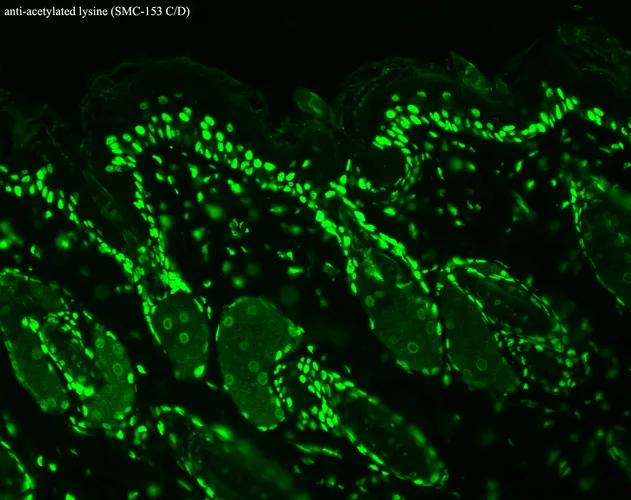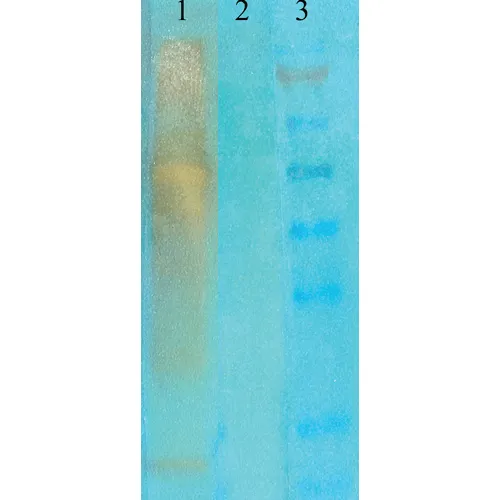Acetylated Lysine Antibody
CAT:
400-SMC-153D
Size:
100 µg
Price:
Ask
- Availability: 24/48H Stock Items & 2 to 6 Weeks non Stock Items.
- Dry Ice Shipment: No






Acetylated Lysine Antibody
- Background: Post-translational modifications of proteins play critical roles in the regulation and function of many known biological processes. Proteins can be post-translationally modified in many different ways, and a common post-transcriptional modification of Lysine involves acetylation (1). The conserved amino-terminal domains of the four core histones (H2A, H2B, H3 and H4) contain lysines that are acetylated by histone acetyltransferases (HATs) and deacetylated by histone deacetylases (HDACs) (2). Protein posttranslational reversible lysine Nε development (5).
- Description: Mouse Anti- Acetylated Lysine Monoclonal IgG1
- Specifications: Detects proteins containing acetylated lysine residues in ELISA and western blots. Does not detect non-acetylated lysine residues.
- Product Name Alternative: Acetyl Lysine Antibody, Acetylated lysine Antibody, Lysine Antibody
- Synonyms: Acetylated Lysine Antibody, Clone 7F8
- CAS Number: 9007-83-4
- UNSPSC: 12352203
- Cellular Locus: Nucleus
- Host: Mouse
- Species Reactivity: Species Independent
- Immunogen: Acetylated KLH
- Target: Acetylated Lysine
- Clonality: Monoclonal
- Isotype: IgG1
- Clone: 7F8
- Conjugation: Unconjugated
- Validated Applications: WB, IHC, ICC/IF, IP, ELISA
- Purification: Protein G Purified
- Limit Of Detection: 1 µg of SMC-153 was sufficient to detect acetylated chicken erythrocyte histones (sodium butyrate-treated) using 20 µg total protein, on western blot by colorimetric immunoblot analysis using Goat anti-mouse IgG:HRP as the secondary antibody.
- Concentration: 1 mg/ml
- Dilution: WB (1:1000), IHC (1:100); optimal dilutions for assays should be determined by the user.
- Weight: 0.1
- Buffer: PBS pH7.4, 50% glycerol, 0.09% sodium azide *Storage buffer changes when conjugated
- Precautions: Not for use in humans. Not for use in diagnostics or therapeutics. For in vitro research use only.
- References & Citations: 1. Yang XJ. (2005). Oncogene. 24:1653-1662. 2. Hassig, C.A. and Schreiber, S.L. (1997). Curr. Opin. Chem. Biol. 1(3): 300-308. 3. Yang XJ. (2004). Bioessays 26:1076-1087. 4. Hughes, R.E. (2002). Curr. Biol. 12: R141-R143. 5. Vigushin, D.M. and Coombes, R.C. (2004). Curr. Cancer Drug Targets 4: 205-218.
